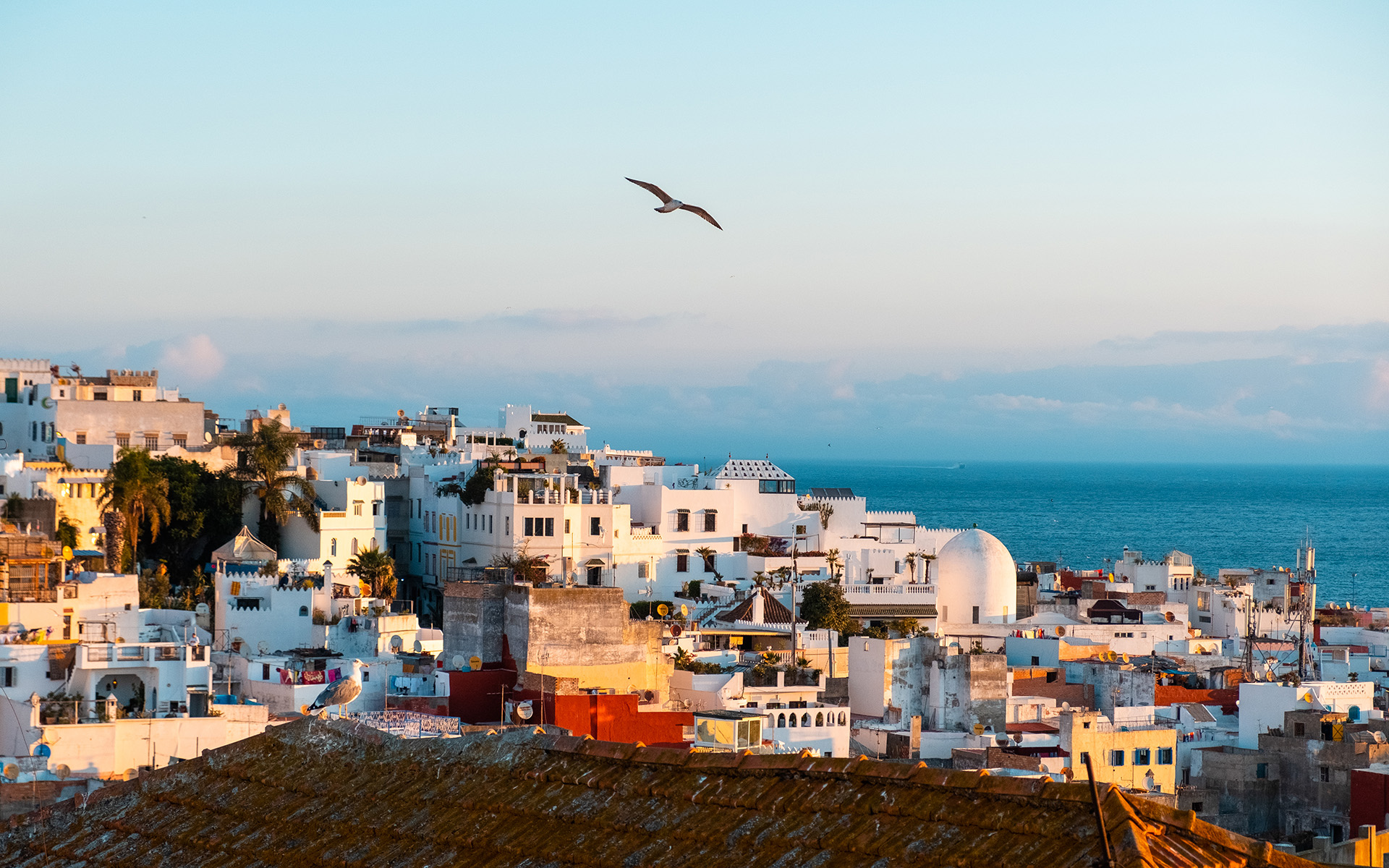Tangier’s proximity to Europe and established automotive base make it a natural winner in supply chain disruptions and nearshoring trends.
City Class Score
| Commercial Hubs | |
| Export Champions | |
| Mobility Connectors | |
| Climate Resilient |
Corporate HQs, MNC presence, branded outlets, hotels, manufacturing, start-up ecosystem,
transport linkages, population, and income.
Go to the class information
Manufacturing, industrial parks, export share and share change by category, air and port
infrastructure, freight time to market, trade agreements, and expert interviews.
Go to the class information
Passenger traffic, flight connectivity, air-cargo flights, port infrastructure, container
ship sailings, and major road networks.
Go to the class information
Coastal and river flooding, extreme rain, extreme heat and humidity, cyclones, and water
scarcity.
Go to the class information
Strategically perched above the Strait of Gibraltar, Tangier boasts a rich
history as a bustling trade hub. Dating back to the eighth century BC, it was a lively Phoenician
port and later became Morocco’s diplomatic capital by the 17th century. The city has long been a
melting pot for foreign traders and diplomats from across the region, busy loading ships and
striking trade deals. In fact, Tangier’s ports exported such a massive quantity of tangerines to
Europe and the United States in the 1800s that the vibrant orange fruit was named after the city.
The term “tangerine” literally means “a native of Tangier.”
While the vast Tanger Med
container port has taken over from historic ports nearer the city, they still gaze out toward
Europe, just a breezy 10 kilometers across sparkling blue waters from the Spanish coast. These ports
are thriving. Morocco’s export sector is experiencing a renaissance, thanks to global supply chain
disruptions. Multinationals are shifting production away from China, bringing supply closer to their
primary market — Europe. Morocco’s textile sector, a powerhouse in the early 2000s, faced tough
competition from China, but things have changed rapidly. As companies look to mitigate risks,
Tangier has emerged as one of Africa’s leading export hubs.
The city has attracted
significant investments from American, European, and Chinese multinationals. French carmaker Renault
invested in Tangier in 2012, sparking a boom in the auto sector. Now Tangier is Africa’s largest
auto producer, with over 250 local and foreign manufacturers shipping a staggering 700,000 vehicles
each year. Shinzoom, a Chinese lithium battery producer, unveiled plans for a $500 million plant in
Tangier, while American company CVG opened a facility to supply electrical systems and mechanical
components. Automobiles are just a start, with the country a magnet for investors in sectors ranging
from aerospace to textiles.
However, a robust export industry cannot be built without solid
transport infrastructure. Tanger Med is Africa’s largest container port facility, and both the city
and the country have made hefty investments in renewables to attract foreign investors seeking clean
energy sources. This includes more than 50 large-scale renewable projects, featuring some of the
largest wind farms in Africa. Additionally, Morocco boasts a strong lineup of free trade agreements,
including the Morocco-European Union Association Agreement and the Morocco-United States Free Trade
Agreement. All of this has transformed Tangier into an export champion, boosting the city’s standing
in our global rankings.

